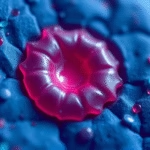Understanding FET Implantation Bleeding
In the context of assisted reproduction, particularly in the case of frozen embryo transfer (FET), implantation bleeding refers to light spotting that may occur when an embryo implants itself into the uterine lining. This phenomenon can happen around 6 to 12 days after embryo transfer. It is often mistaken for the start of a period, but in many cases, it signifies the early stages of pregnancy. Understanding this process can help those undergoing fertility treatments differentiate between normal signs of implantation and potential complications. It is crucial to monitor such symptoms closely, as the implications can influence both emotional well-being and clinical decisions within reproductive health.
Recognizing the timing and characteristics of FET implantation bleeding can provide valuable insight into the success of the embryo transfer. Many individuals experiencing such bleeding may wonder if it is a positive sign or merely a symptom of an impending menstrual cycle. The nuances surrounding FET implantation bleeding necessitate a thorough understanding of reproductive biology, particularly regarding the timing of ovulation, the embryo transfer process, and how an embryo interacts with the endometrial lining.
FET Procedure Overview
The Frozen Embryo Transfer (FET) procedure is a seminal aspect of In Vitro Fertilization (IVF) treatment. This method allows healthcare providers to implant previously frozen embryos. Understanding the process of FET is vital as it relates closely to the occurrence of implantation bleeding. FET involves several meticulous steps:
- Stimulation of the ovaries to produce eggs.
- Retrieval of the eggs from the ovaries.
- Fertilization of eggs with sperm in a lab.
- Freezing of viable embryos for future transfer.
- Preparing the uterine lining for embryo implantation.
- Transferring a frozen embryo into the uterus.
Each of these steps is aimed at ensuring both the physical and biological readiness of the body for successful implantation. The timing of embryo transfer is particularly crucial as it aligns with the menstrual cycle, aiming to synchronize implantation with the most favorable environment for embryo growth.
Signs of Implantation Bleeding
Identifying early pregnancy signs can be confusing, especially for those undergoing fertility treatments. Implantation bleeding has specific characteristics that set it apart from regular menstrual bleeding:
- Timing: Occurs about six to twelve days post-embryo transfer.
- Color: Typically light pink or brown, rather than the bright red associated with menstrual bleeding.
- Flow: Generally lighter and shorter in duration than a regular period.
- Symptoms: May or may not accompany mild cramping, unlike typical menstrual cramps, which are usually more intense.
It is essential to monitor these signs closely and consult with a healthcare professional if there is any uncertainty. Knowing what to expect can mitigate anxiety during the waiting period following embryo transfer.
Difference Between Implantation Bleeding and Menstrual Cycle
Many individuals often confuse implantation bleeding with the onset of a menstrual cycle; however, understanding the differences can help. Key distinctions include:
- Duration: Implantation bleeding generally lasts a few hours to two days, while a menstrual period lasts anywhere from three to seven days.
- Flow: Implantation bleeding involves light spotting, not a full flow.
- Color: Implantation bleeding is lighter in color, while menstrual blood is typically bright red to dark brown.
Recognizing these differences is vital for those undergoing fertility treatments. If an individual mistakenly believes implantation bleeding signifies the start of their period, it could lead to unnecessary distress. Accurate knowledge empowers individuals to better understand their bodies during this critical time.
When to Seek Medical Advice
While light spotting can be normal, there are times when it is imperative to seek medical advice. Factors to consider include:
- Excessive bleeding: More than just light spotting could indicate a complication.
- Severe cramping: Increased levels of pain could suggest a problem.
- Additional symptoms: Fever, chills, or unusual discharge may require medical attention.
If you have undergone an FET and experience any of these signs, do not hesitate to contact your healthcare provider. They can provide the necessary evaluations and reassurance during a potentially anxious time.
Potential Causes of Implantation Bleeding
Implantation bleeding is generally viewed as a normal phenomenon, but several factors can impact its occurrence:
Though most cases of implantation bleeding are benign, some may have underlying implications requiring further evaluation. Understanding these potential causes prepares patients for a broader discussion with their healthcare providers regarding symptoms and options.
Emotional Impact of Implantation Bleeding
The experience of implantation bleeding can have varying emotional effects on individuals undergoing fertility treatments. Many may feel hope if they connect spotting with positive pregnancy signs. However, others may feel anxiety, especially if they worry about the outcome of their FET:
- Hope: Spotting can be seen as a sign that the embryo is successfully implanting.
- Anxiety: Some individuals may worry about potential complications or miscarriage.
- Support: It is beneficial to seek emotional support from partners, friends, or therapy.
Recognizing these feelings is vital to managing the emotional rollercoaster that often accompanies fertility treatments. Open communication with healthcare providers and support systems can help ease these emotional burdens.
Conclusion
Understanding FET implantation bleeding is an essential aspect of navigating the complexities of assisted reproductive technology. By comprehending the process of frozen embryo transfer, recognizing signs of implantation bleeding, differentiating it from menstrual flow, and understanding when to seek medical advice, individuals can better empower themselves during this journey. It is crucial to realize the importance of seeking timely medical guidance and support.
Being informed not only reduces anxieties but also fosters a profound understanding of one’s reproductive health. Whether interpreting signs of implantation bleeding or understanding the emotional health related to FET, knowledge is a powerful tool. The journey toward conception can undeniably bring about feelings of hope and uncertainty; being prepared with knowledge ensures individuals are equipped to handle whatever arises sensitively and thoughtfully.
Frequently Asked Questions
1. What is implantation bleeding?
Implantation bleeding is light spotting that may occur when a fertilized embryo attaches to the uterine lining, typically occurring 6 to 12 days after embryo transfer.
2. How can I differentiate implantation bleeding from my menstrual period?
Implantation bleeding is usually lighter in color and flow, shorter in duration, and occurs earlier than a menstrual period.
3. Should I be worried if I experience bleeding after FET?
Light spotting can be normal, but excessive bleeding or severe cramps warrants immediate medical attention.
4. Can implantation bleeding occur with twin pregnancies?
Yes, implantation bleeding can occur with twin pregnancies as well since both embryos may implant in the uterine lining.
5. When should I take a pregnancy test after FET?
It is advisable to wait about two weeks post-embryo transfer to take a pregnancy test for accurate results.
Further Reading
What Type of Psychotherapy Is Best for Anxiety?







